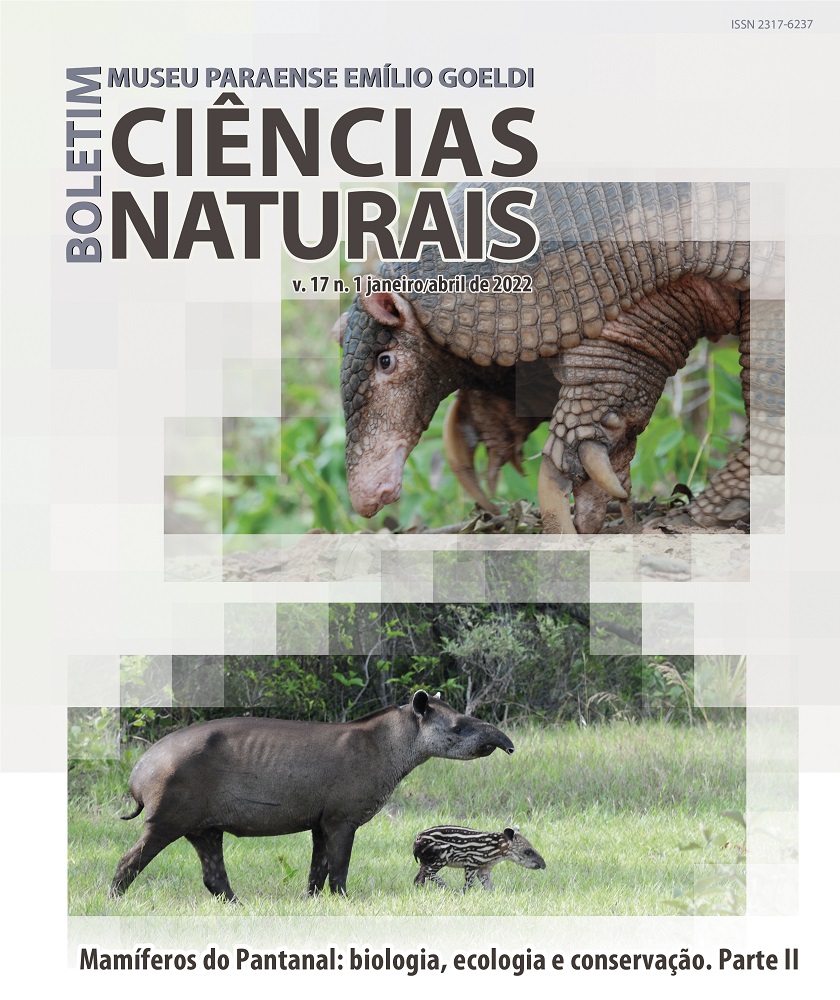Anteaters (Vermilingua, Pilosa) of the Upper Paraguay Basin: a review of the knowledge from the Plateau to the Pantanal Wetland
DOI:
https://doi.org/10.46357/bcnaturais.v17i1.833Keywords:
Cerrado, Ecology, Natural history, Shortfalls, Pantanal, XenarthraAbstract
The Pilosa order includes sloths and anteaters, the latter belonging to the suborder Vermilingua. The Myrmecophagidae family, within Vermilingua, is represented in Brazil by the giant anteater (Myrmecophaga tridactyla) and the lesser anteater (Tamandua tetradactyla). Both species are characterized by the absence of teeth and elongated and conspicuous skull morphology. This study aims to provide information related to the genera Myrmecophaga and Tamandua, focusing on their distribution in the Upper Paraguai Basin and the Pantanal wetlands of Brazil. The information provides data on morphology, geographic distribution, habitat occurrence, period of activity, feeding, reproductive biology, threats, conservation projects, and techniques used to study the species. M. tridactyla is one of the most studied species within the superorder Xenarthra, but research is limited to a few regions. For T. tetradactyla, natural history information (population dynamics, reproduction, resource use, among others) is practically absent. There is a knowledge gap for implementing management and conservation actions for both species, and bibliographic surveys are a step towards advancing this knowledge.
Downloads
Published
Issue
Section
License
Publication means fully assigning and transferring all copyrights of the manuscript to the journal. The Liability Statement and
Assignment of Copyrights will be enclosed with the notice of acceptance. All the authors must sign the document and return it to the journal.






